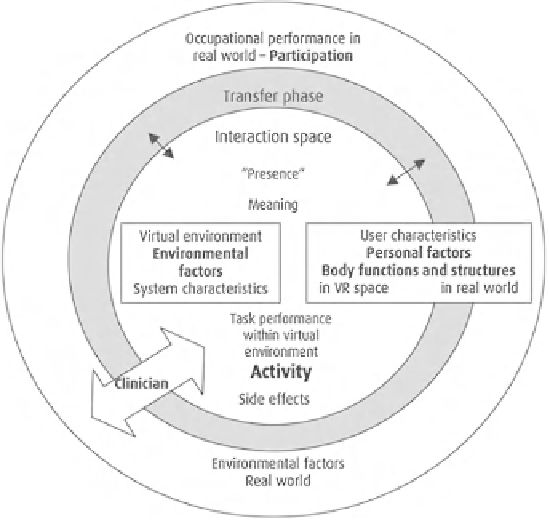Biomedical Engineering Reference
In-Depth Information
Fig. 15.1
The three-nested
circle
schema. Reproduced with permission (A request of permission
for reproduction of this figure was submitted in the Fall of 2011.) from Weiss et al. [
74
]
function. The final, outermost circle in the schema refers to the
real world
and denotes
changes in the affordances of the environment [
15
,
65
] as a result of rehabilitation.
For example, objects that previously prevented patients from interacting with the real
world—the presence of low curbs or moving obstacles in a crowded environment
(e.g., a busy airport or a busy intersection)—no longer present barriers but now afford
passage for walking. This component is wholly dependent on the skills gained in the
transfer phase and symbolizes the final rehabilitation goal of increasing the patient's
participation in the real world, ultimately leading to an improved quality of life [
75
].
The nested three-circle schema introduces a useful heuristic for the development
and implementation of immersive VR-based rehabilitation interventions. Moreover,
each individual component highlights important considerations for researchers and
clinicians as they seek to employ these techniques in patient populations. The rest of
this chapter is devoted to reviewing different VR-based approaches to rehabilitation
and assessment. Each of these approaches is distinguished by novel methodologies
developed by clinicians and researchers alike. Despite these differences, eachmethod
shares a commitment (whether intentional or not) to the principles of the three-circle
schema and offers a framework, in its own right, for the development of new and
exciting VR-based interventions for improving functional mobility.

